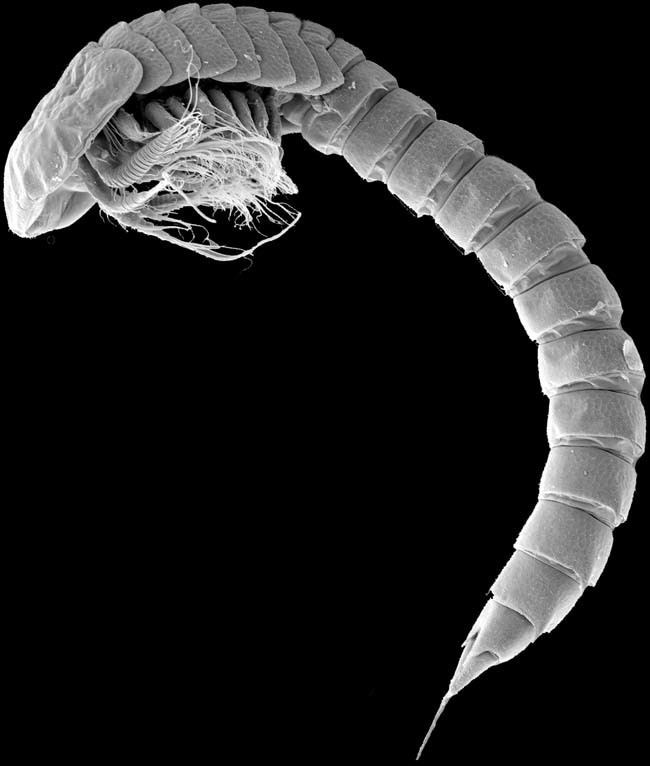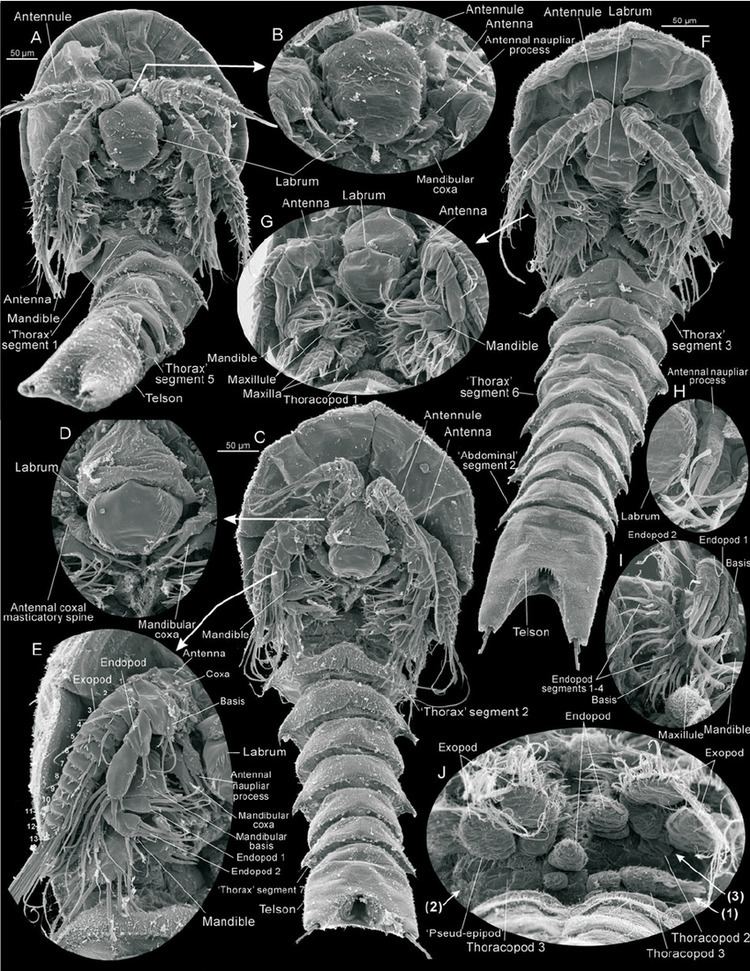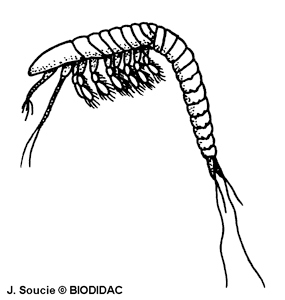Scientific name Cephalocarida Order Hutchinsoniellidae | Higher classification Crustacean Rank Class | |
 | ||
Family HutchinsoniellidaeSanders, 1955 Similar Crustacean, Remipedia, Arthropod, Maxillopoda, Branchiopoda | ||
The Cephalocarida are a class in the subphylum Crustacea comprising only 12 benthic species. They were discovered in 1955 by Howard L. Sanders, and are commonly referred to as horseshoe shrimps. They have been grouped together with the Remipedia in the Xenocarida. Although a second family, Lightiellidae, is sometimes used, all cephalocaridans are generally considered to belong in just one family: Hutchinsoniellidae. Though no fossil record of cephalocaridans has been found, most specialists believe them to be primitive among crustaceans.
Contents

Description and anatomy

These crustaceans are from 2 to 4 mm (0.079 to 0.157 in) in length, with an elongated body. They have a large head, the hind edge of which covers the first thoracic segment. They have no eyes, presumably because of their muddy natural habitat. The second pair of antennae is located behind the mouth; in all other crustaceans the antennae are in front of the mouth at the adult stage, and only their larvae have antennae that have the same location as adult cephalocaridans.
The mouth is located behind the large upper lip, flanked by mandibles. The first pair of maxillae is very small, and the second pair has the same structure as the following thoracic legs: a large basal part, equipped with outgrowths on the inner side, used in locomotion, a forked inner branch and two outer lobes - referred to as the "pseudoepipod" and the "exopod". The structural and functional similarity between the maxillae and the legs may be a sign of primitive organization; the maxillae are not specialized, as they are in other crustaceans.
The thorax consists of 10 segments, and the abdomen bears a telson but no other appendages.
Ecology

Cephalocaridans are found from the intertidal zone down to a depth of 1,500 m (4,900 ft), in all kinds of sediments. Cephalocaridans feed on marine detritus. To bring in food particles, they generate currents with the thoracic appendages like the branchiopods and the malacostracans. Food particles are then passed anteriorly along a ventral groove, leading to the mouthparts.

